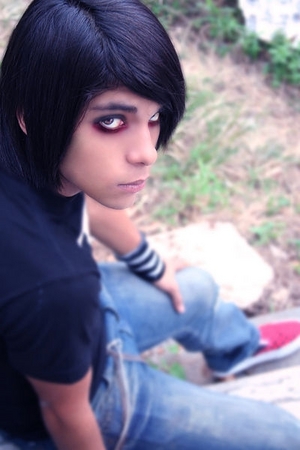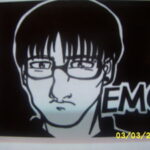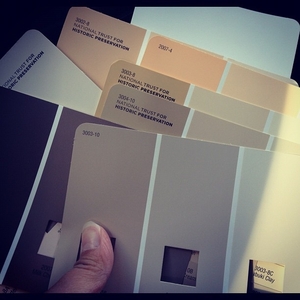What may seems like a harmless “phase” your child is passing through on their way to adulthood, could really be a way of life they are choosing for themselves – one that can be both dangerous and destructive. In this article, you will learn the meaning of the term “emo,” where the subculture came from, the fashion, music, and literature that pervades this scene, and most importantly – what signs to watch for in your child.
What is an Emo?
Mention the word “Emo” to most teenagers today and the first definition that will probably to come to mind is “depressed,” “withdrawn,” or “dark.” However, in reality, the term emo means different things to different people. “Emo” is an abbreviation of the word “emotional” or “emotive” used to describe this group, which has become a counterculture of society. Many Emos consider themselves to be a younger, hipper subset of the “Goth” counterculture. Not to get into a textbook sociological definition, but, for those unaware, a counterculture is a variation of the dominant culture that often bases its differences on a disagreement with the mainstream society. This disagreement usually leads to conflict, which is attractive to many adolescents who are attracted to rebellion. The “hippie” movement of the 1960’s is a prime example of a counterculture and their clash with the dominant culture. Their clothing, music, and lifestyle were all tailored to challenge the “establishment” and, in that regard, emo is no different.
Recent popularity of emo
Emo, in an of itself, is not a new concept. Emo first emerged from the hardcore punk scene of 1980’s Washington D.C. and thrived in the area throughout the 80’s and into the early 90’s. During the 90’s, emo was reinvented and heavily influenced by a number of bands, such as Jawbreaker and Sunny Day Real Estate, and began to spread to other parts of the country and gain popularity. Flash forward to 2000’s and Emo has gained mainstream popularity – ironic because the mainstream establishment seems to be the very thing the emo culture is rebelling against. In the summer of 2002, bands Jimmy Eat World and Dashboard Confessional had chart-topping hits that espoused the emo lifestyle and brought the term to the forefront of a cultural wave.
Possible Precursors to Becoming Emo
• While there is no direct correlation between socio-economic factors and becoming an Emo, it seems that people from lower socio-economic classes may be drawn to the emo counterculture due to its lack of emphasis on “status” and “labels.” However, those from wealthier families may too be drawn to this group as a form of intense rebellion against the system.
• Chaotic homelife, uninvolved parenting and/or childhood trauma, may be precursors
• Being bullied at school or ostracized by peers may be a precursor.
• Insecure, introverted, attention-seeking, sensitive, introspective, intelligent children are most susceptible to being involved with this counterculture.
Warning Signs
• Exhibits symptoms of prolonged depression.
• Ostracized by peers or has a very difficult time making friends.
• Insecure in their abilities or their appearance.
• Withdrawn, moody, bitter, resentful, sullen, and/or rarely or never smiles.
• Spends much of their time alone or locked away in their room.
• Has little regard for the feelings of others.
• Uses manipulative or deceptive behaviors to get their way.
• Begins hitting their forehead against their palm or against walls in anger.
• Becomes enraged over small and seemingly insignificant things.
• Dulled sensitivity to pain.
• Scratches themselves of picks obsessively at skin or pimples.
• A sudden change in clothing or development of an androgenous style.
• A sharp drop in grades.
• A sudden change in friends.
• Rebellion and lack of response to discipline or lack of respect for authority.
• Harbors a secret pain or seems to be suffering, but insists on keeping to himself or herself.
• Interest in “yaoi” or other homoerotic images and material
• Spends countless hours on websites such as livejournal.com or xanga.com, which are often used for self-harm blogging.
• Constant conflict with or resentment toward their mother.
• Takes interest in reading or writing dark poetry.
• Denying involvement in such things when questioned.
Components of the Emo Lifestyle
Music
Music is an integral part of the Emo way. It is a release of pain as well as an expression of being for most Emos. There are different genres of Emo music, but most fall within one of the four following categories:
• Emo bands include: Matchbook Romance, Moss Icon, Rites of Spring, City of Caterpillar, Poison the Well, Senses Fail, My Chemical Romance (whose album, Black Parade, pays homage to the place where Emos believe they will go when they die,) Fall Out Boy
• Screamo bands include: The Used, Love Like Electrocution, Clip the Apex, Neil Perry, I Would Set Myself on Fire for You
• Indie-Emo Fusion bands include: Dashboard Confessional, Death Cab for Cutie, Cursive, Straylight Run, The Summer Obsession, North of America
• Post Hardcore bands include: Saosin, Jawbreaker, Thursday, Funeral for a Friend, LoveHateHero.
Literature & Art
• Catcher in the Rye by J.D. Salinger. In a prime example of life imitating art, J.D. Salinger was as controversial and rebellious in life as his fictional main character, Holden Caulfied. Emos may relate to this literary work because of its topics: conflicts between social groups and a rebellious and tortured protagonist.
• Franny and Zooey by J.D. Salinger. Another controversial work by Salinger, Franny and Zooey was originally published as two separate short stories – one being a continuation of the other – in the New Yorker, 1955. Franny Glass is a college student who has a breakdown while grappling with feelings of phoniness among her peers and egotism on the part of the faculty. She reveals to her boyfriend that she has become interested in a new form of spirituality. In Zooey, Franny continues her quest for personal and spiritual realization and is often a depressing, sobbing wreck. Many Emos will identify personally with the Franny’s pain.
• Hamlet and Romeo & Juliet by William Shakespeare. Dealing with dark themes such as insanity, intense grief, murder, and suicide, Emos are often interested in the works of Shakespeare.
• White Oleander by Janet Finch. A depressing tale of a young girl’s life, as she is forced to live in many different foster homes after her mother is imprisoned. From drug abuse to prostitution, the girl leads a dark and troubled existence and many Emos may feel a personal connection to the main character in the book.
• Cut by Patricia McCormick. Callie cuts herself, not so much because she wants to end her life, but because she wants to take away the pain of life. Cut is a story of a young woman’s insecurities, her self-inflicted pain, and her path to redemption through therapy.
• Impulse by Ellen Hopkins. This book follows a group of young adults who have all experienced some form of abuse. At the opening of the story, the reader learns that the protagonist has tried to kill himself. Cutting, suicide, abortion, and homosexuality are all key components of the storyline, but Emos are most likely to identify with the emotional pain felt by many of the main characters.
• Emos may also be interested in literature about vampires, such as the Twilight series or Bram Stoker’s Dracula, werewolves, monsters, such as Mary Shelley’s Frankenstein, Greek mythology, and topics about mysticism and darkness.
• Popular Emo art includes images of anime and yaoi, a homoerotic Japanese illustration, boys kissing one another, skulls, artistic representations of blood and self-piercing. Nautical stars, cherries, guitars, swallows or sparrows in the form of tattoos are also very popular among members of this counterculture.
Fashion
Fashion is what helps establish an Emo to the outside world. The dress code is one of non-conformity, however, members of the counterculture must conform to the “Emo look” or face potential ostracizing by their own group. Though Emo fashion can take on many forms, there are a few wardrobe staples:
• Tight jeans or “skinny” jeans for males and females.
• Striped t-shirts, children’s t-shirts (or shirts that are a few sizes too small or very tight) with band logos or words such as “hate” or “unhappy chick” on the front.
• Hoodies
• Chuck Taylor Converse All-Star sneakers are a must have; Vans or other skateboard shoes will do in a pinch.
• Sweater vests
• Thrift store or vintage threads
• Horn-rimmed or black frame glasses
• Rubber multicolored bracelets (and lots of them)
• Long side-swept bangs that cover one or both eyes
• Straightened hair dyed black with streaks of neon color (such as red, purple, or green)
• Eyeliner – the thicker the better – drawn from corner to corner and lining the top eyelid.
• Black nail polish
• Tattoos of nautical stars, cherries, guitars, sparrows or swallows
• Body modifications, such as lip rings, multiple ear piercings, eyebrow piercings, gauges or “ear plugs” with nautical stars
Why Parents Should Be Concerned
Though many parents might brush off the warning signs as being a teenage “phase” or a chance at independence and self expression, it is important to pay attention to what is going on in your child’s life. While wearing skinny jeans and listening to screamo may not be a problem in and of itself, there is a much more sinister side to the Emo culture.
Self Harm is the act of inflicting injury to oneself as a response to stress or deep emotional pain, often without suicidal intent. The number of people engaging in self harm is staggering. Approximately two million people in the United States are self-injurers and this number is grossly underestimated because so many acts of self harm go unreported or unnoticed. Studies report that female teenagers are most at risk for these type of behaviors.
• Suicide
The Internet is littered with articles about teenagers committing suicide. Google “Emo suicide” and the first search result that appears is: “Girl, 13, hangs herself after becoming obsessed with Emo ‘suicide cult’ rock band.” The teen was described as a quiet soul and a “model student” and yet, quite suddenly, she began following U.S. rock band, My Chemical Romance, and cutting her wrists in what she told her father was part of “initiation” into the Emo culture.
What are the types of self harm and are there any warning signs parents should be aware of?
• Cutting – involves making cuts or scratches on the body with any sharp object, including knives, razor blades, needles, or even fingernails. The arms, legs, and torso are the most common areas associated with this type of self harm because they are easily accessible and easy to hide underneath clothing.
• Branding – burning self with hot objects or using a pencil eraser to cause a friction burn on the skin.
• Hair pulling (trichotillomania) – an obsessive compulsive behavior that involves pulling hair from the scalp and other parts of the body during times of emotional stress or frustration. It is a learned behavior that is sometimes associated with moderate to severe mental disorders and can be overcome with cognitive behavioral therapy.
• Multiple piercing or tattooing – an addictive and common self harm behavior that involves using physical pain to relieve stress.
Prevention and Awareness
1. Spend time with your child. There is no substitute for good old fashioned communication. Statistically, it has been proven that children who have an open relationship with their parents feel “connected” are less likely to become involved in attention-seeking behaviors. Make your expectations known and give your child good explanations. If they know you are there for them and they can trust you, the risk of them seeking out destructive subcultures for acceptance plummets.
2. Be in tune with their tunes. Listen to your child’s music, specifically the lyrics and the message they are sending. If you can’t quite understand the lyrics, do a Google search and find out. While listening to sad songs does not make your child Emo nor does it put them at risk for dangerous behavior, listening to songs about death, destruction, drugs, or self-harm can have a very negative effect.
3. Heed the warning signs. The worst thing a parent can do is be in denial. If your child suddenly begins spending too much time alone in their room, is running with a very different group of friends than what they used to, and/or has a drastic change in clothing, hair style, or overall appearance, there may be something going on. Usually where there is smoke, there is also fire. Talk with your child and find out what is going on in their life.
4. Beware of social networking sites. While the Internet can be a great tool, it can also be a dangerous one. MySpace is chock full of profiles and links devoted to Emo and self-injury (i.e. suicide and cutting) and a newer site, Bebo, has even more outlets for those looking to get involved in these activities. Recently, social networking sites have been used for teens to plan drug parties because it is less risky than using a text message or making a cell phone call that a parent might be able to check up on. Keep tabs on who your child is talking to, what information is on their profile, and what group sites they may be visiting.
5. Be conscious of rubber “wrist bands.” Wearing an arm-full of rubber bracelets is not harmful in and of itself, and in most cases, is probably benign. However, in recent years these multi-colored bracelets have been linked to sexual games in which a bracelet is given to a significant other in return for a sexual favor. The color of the bracelet dictates the act. For example, a black bracelet might mean a kiss and a red bracelet might mean oral sex. Even more alarming, these bracelets are now being worn to cover up “cutting” scars on the wrists of those involved in self-harm. Check into your kid’s wrist bands and know whether they are wearing them for fashion or for something else.
6. Get involved. Help is available for those who seek it out. To Write Love on Her Arms is a non-profit organization dedicated to helping those struggling with depression, addiction, self-injury, and suicidal behaviors. Their mission is to encourage, inform, and bring hope through treatment and recovery programs. Visit their website at http://www.twloha.com.
7. If it is apparent that your child is already involved in the Emo lifestyle, keep a close watch over them. Not every Emo participates in cutting and suicide, but the risk for behaviors such as this goes up drastically when they are actively involved in such a group. Attempting to immediately take away your child’s Emo clothes and music may make a bad situation worse. Once a child is involved in Emo, it is very difficult to remove them from it without a significant risk of suicide. Seek professional help if this is the case. The best course of action is PREVENTION, so be alert, be aware, and be active.
Websites:
• www.luv-emo.com
• http://simplyhot.multiply.com/journal/item/8/EMO_kit…
• http://en.wikipedia.org/wiki/Emo
• http://helpguide.org/mental/self_injury.htm
• www.twloha.com





